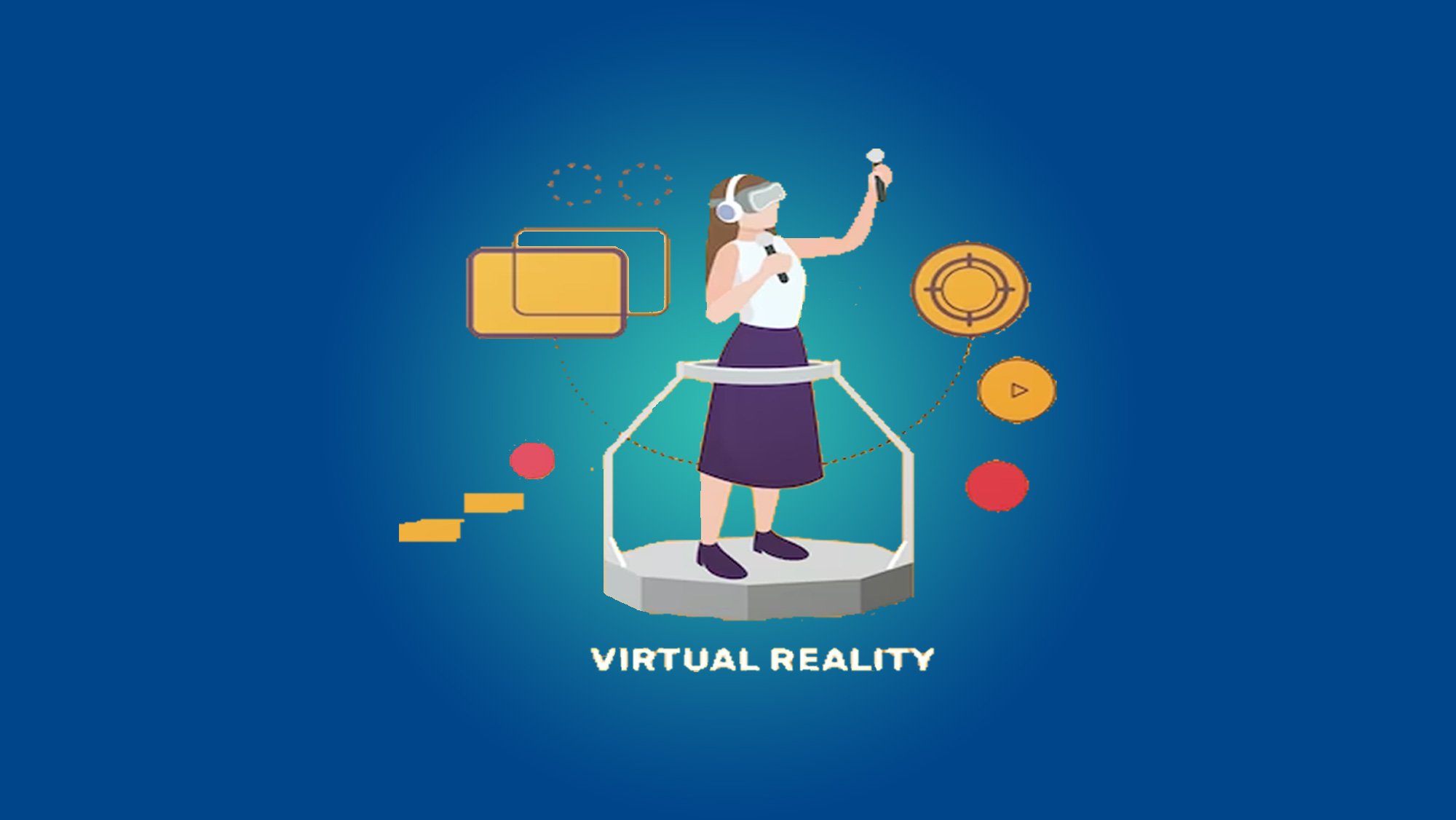Everything You Need To Know About Virtual Reality Training
Introduction:
Virtual Reality (VR) is revolutionizing the way we learn and train by creating immersive and interactive experiences. In various fields, from healthcare to aviation, virtual reality training is being utilized to provide realistic simulations that enhance skills and knowledge. This blog will delve into the world of virtual reality training, exploring its benefits, applications, and how it is transforming the learning landscape.
What is Virtual Reality Training?
Why is virtual reality training effective?
How is virtual reality training implemented?
What is the purpose of virtual reality training?
Benefits of Virtual Reality Training:
What is Virtual Reality Training?
Virtual reality training is a method of learning that uses immersive virtual environments to simulate real-world scenarios, allowing individuals to gain practical experience and enhance their skills in a safe and controlled setting.
Why is Virtual Reality training effective?
Virtual reality training is effective for several reasons:
- Immersive Experience: Virtual reality provides a highly immersive experience, creating a sense of presence and realism. Learners feel like they are physically present in the simulated environment, enhancing engagement and improving knowledge retention.
- Practical Skill Development: Virtual reality allows learners to practice skills in a safe and controlled environment. They can perform hands-on tasks, make decisions, and face realistic challenges, enabling them to gain practical experience without the risks and costs associated with real-world training.

Read More: Virtual Reality Training: Immersion for Innovative Advancements |
- Realistic Simulations: Virtual reality can replicate complex real-world scenarios with a high degree of accuracy. It can simulate various environments, equipment, and situations, providing learners with authentic experiences and preparing them for real-life challenges.
- Mistake-Friendly Environment: In virtual reality training, learners can make mistakes without consequences. They can experiment, learn from their errors, and iterate until they achieve desired outcomes. This promotes a risk-free learning environment that encourages exploration and innovation.
- Personalized and Adaptive Learning: Virtual reality training can be tailored to individual needs and learning styles. It allows for personalized learning paths, adaptive feedback, and interactive elements that respond to learners' actions, providing a customized learning experience that maximizes engagement and knowledge acquisition.
- Remote and Collaborative Training: Virtual reality enables remote training, allowing learners to participate from different locations. It also supports collaborative learning experiences, where individuals can interact and collaborate with others in the virtual environment, fostering teamwork and knowledge sharing.
- Performance Evaluation and Analytics: Virtual reality training platforms often provide data and analytics that help assess learners' performance. Trainers can track progress, identify areas for improvement, and provide targeted feedback, enabling continuous learning and development.
How is Virtual Reality training implemented?
Virtual reality training is implemented through a combination of hardware, software, and content development. Here is a general overview of the implementation process:
- Hardware: Virtual reality training requires specialized hardware to create and deliver the immersive experience. This typically includes VR headsets, motion controllers, and tracking systems. These devices track users' movements and enable them to interact with the virtual environment.
- Software: Virtual reality training relies on software platforms that create and run the virtual simulations. These platforms can range from game engines like Unity or Unreal Engine to specialized VR training software. They provide the necessary tools for content creation, interaction design, and user interface development.
- Content Creation: Developing virtual reality training content involves creating 3D models, environments, and interactive elements. This includes designing realistic simulations of real-world scenarios, objects, and processes. Content creators use 3D modeling software, animation tools, and scripting languages to bring the virtual environment to life.
- Integration: The virtual reality content is integrated into the software platform, ensuring that it runs smoothly and responds to user interactions. This involves programming interactions, setting up physics simulations, and integrating audio and visual effects. The goal is to create a seamless and immersive experience for the learners.
- Deployment: Virtual reality training can be deployed on various platforms, depending on the intended use case. This could include standalone VR devices, PC-based systems, or even mobile VR platforms. The training content is packaged and distributed to the target devices or made available through online platforms.
- User Interaction: During the training session, users wear the VR headset and interact with the virtual environment using motion controllers or other input devices. They can perform actions, manipulate objects, and navigate through the simulated scenarios. The virtual reality system tracks their movements and provides feedback in real-time.
- Evaluation and Feedback: Virtual reality training platforms often include evaluation and feedback mechanisms. Trainers can assess learners' performance, track their progress, and provide feedback on their actions within the virtual environment. This helps identify areas for improvement and provides targeted guidance.
What is the purpose of virtual reality training?
The purpose of virtual reality training is to provide a realistic and immersive learning experience that enhances knowledge acquisition, skill development, and performance improvement. Here are some key purposes of virtual reality training:
- Enhancing Engagement: Virtual reality training creates a high level of engagement by placing learners in a fully immersive and interactive environment. It captures their attention and interest, leading to better focus and retention of information.
- Replicating Real-World Scenarios: Virtual reality allows learners to experience and practice tasks and situations that may be challenging, expensive, or dangerous in real life. It provides a safe and controlled environment for learners to develop skills and gain confidence.
- Hands-on Practice: Virtual reality training enables learners to engage in hands-on practice, allowing them to perform tasks and interact with objects and environments in a realistic and intuitive manner. It bridges the gap between theory and practice by providing experiential learning opportunities.

Read More: Mastering Virtual Reality: Essential Training for Next-Level Immersion |
- Skill Development: Virtual reality training facilitates the development of both technical and soft skills. It can be used to train professionals in fields such as healthcare, aviation, engineering, and customer service, enabling them to practice procedures, decision-making, and communication in a realistic context.
- Error and Risk Management: Virtual reality allows learners to make mistakes without real-world consequences. They can learn from their errors, experiment with different approaches, and refine their skills in a safe and supportive environment. This promotes risk-free learning and encourages innovation.
- Remote and Collaborative Learning: Virtual reality training can be accessed remotely, eliminating the need for physical presence in a specific location. It also enables collaborative learning experiences, where multiple learners can interact and work together in the virtual environment, fostering teamwork and knowledge sharing.
- Performance Assessment and Feedback: Virtual reality training platforms often provide performance assessment tools and real-time feedback. Trainers can track learners' progress, evaluate their performance, and provide targeted feedback based on their actions within the virtual environment.
Benefits of Virtual Reality Training:
Virtual reality training offers numerous benefits that make it an increasingly popular and effective learning method. Here are some key benefits of virtual reality training:
- Realistic and Immersive Experience: Virtual reality creates a highly immersive environment that closely replicates real-world scenarios. Learners can interact with lifelike simulations, which enhances engagement and provides a sense of presence and realism.
- Experiential Learning: Virtual reality training enables experiential learning, allowing learners to practice tasks and apply knowledge in a hands-on manner. This active engagement improves retention and comprehension compared to passive learning methods.
- Safe and Controlled Environment: Virtual reality provides a safe and controlled space for learners to make mistakes and learn from them without any real-world consequences. It allows for risk-free exploration and experimentation, promoting confidence and skill development.
- Accessibility and Flexibility: Virtual reality training can be accessed from anywhere, making it highly accessible for remote learners. It eliminates geographical barriers and enables flexible learning at the learner's convenience, reducing the need for physical classrooms or equipment.
- Personalized and Adaptive Learning: Virtual reality training can adapt to the learner's pace, skill level, and preferences. It can provide personalized feedback, guidance, and challenges based on individual performance, optimizing the learning experience for each learner.
- Cost and Resource Efficiency: Virtual reality training reduces the need for physical equipment, travel expenses, and on-site trainers, resulting in cost savings. It enables organizations to train large groups of learners simultaneously and offers scalability without additional resources.
- Enhanced Engagement and Motivation: The immersive nature of virtual reality training captivates learners' attention and motivates them to actively participate. The interactive and gamified elements increase engagement and enjoyment, leading to improved learning outcomes.
Conclusion:
Virtual reality training offers exciting possibilities for enhancing learning and skill development across various industries. By immersing learners in realistic simulations, it enables them to acquire knowledge, practice skills, and build confidence in a safe and engaging environment. As technology continues to advance, virtual reality training will play an increasingly significant role in shaping the future of education and professional development.
You May Also Like
These Related Stories

Virtual Reality Training: Immersion for Innovative Advancements

Mastering Virtual Reality: Essential Training for Next-Level Immersion



No Comments Yet
Let us know what you think